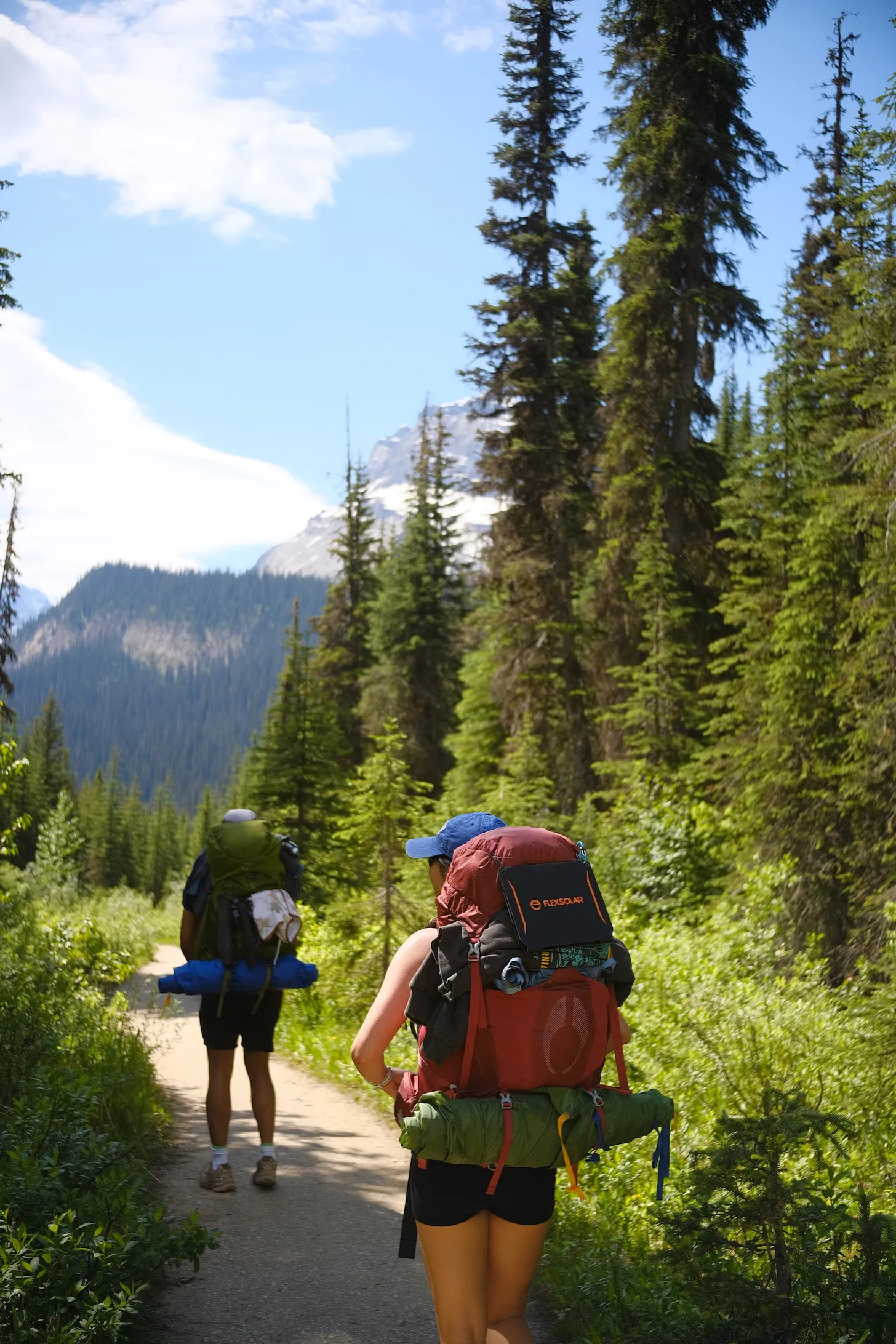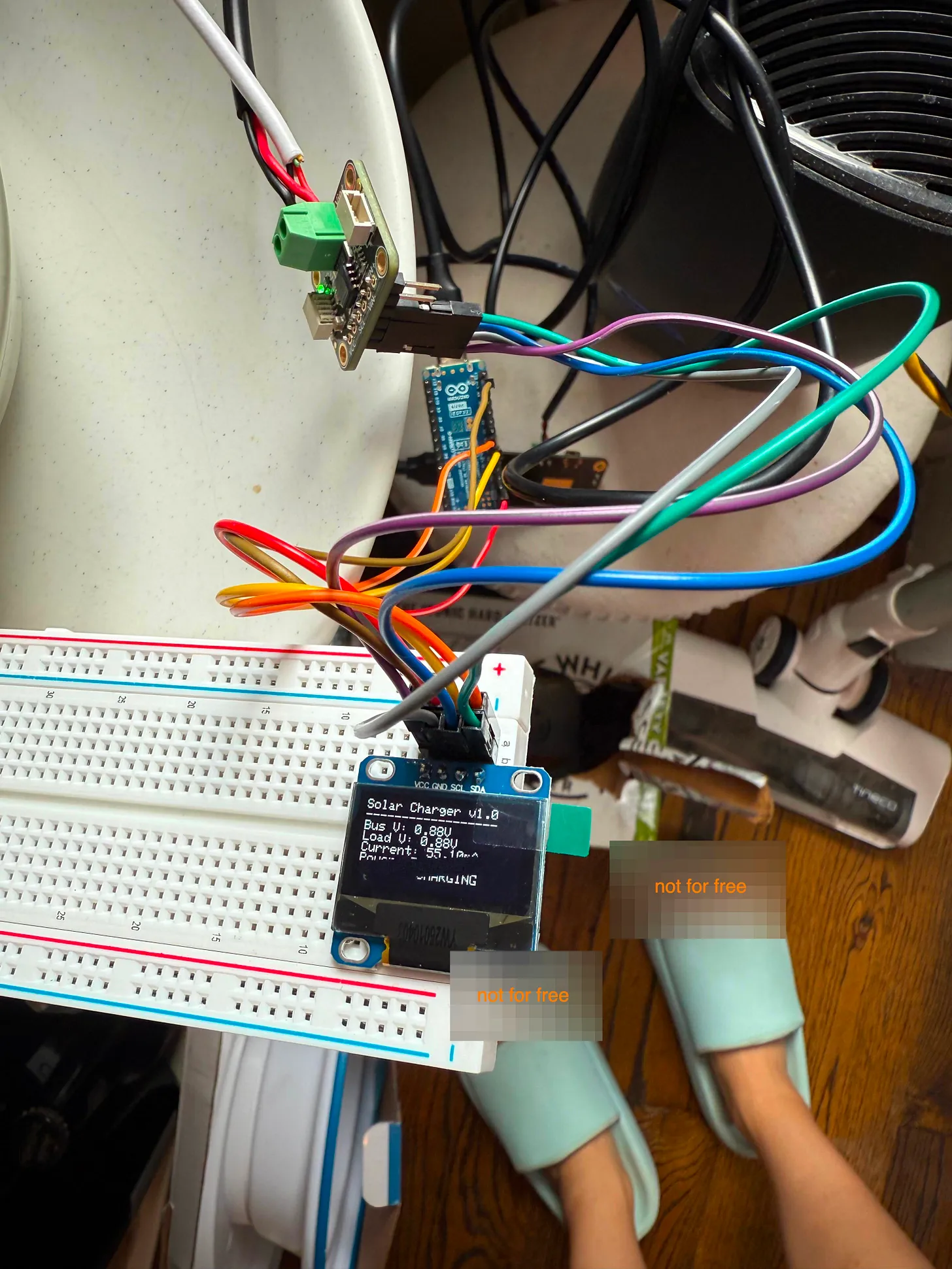energy + hardware
energy writing
energy projects
I share research and thoughts at my newsletter, this is going to be electric.
Topics I’ve written about:
- a high-level intro to the future of clean energy x tech x policy
- generation: solar, wind, hydropower
- generation: geothermal, biomass, nuclear
- what is energy transmission?
- what is interconnection?
- interconnection solutions and startups
- what is energy distribution?
visualizing the energy stack
building a solar-powered battery pack for backpacking
As a high schooler in public forum debate I argued the merits of carbon credits. At Duke, I studied policy and sat on the University’s Climate Commitment Advisory Council (CCAC) as student body president. At McKinsey I worked with HVAC efficiency climate tech startup Sealed while helping scale the InNYC Startup Accelerator. Today, I’m compelled by energy not just because it’s essential, but because it’s hard.
It’s hardware-first, governed by regulation. Demand is set to rise 50% by 2050, largely due to AI. I care that we rise to meet that demand through a clean transition. I’m an optimist at heart and especially curious about the intersection between hardware and software. To understand these constraints firsthand, I'm building hardware side projects - from solar battery packs to autonomous systems (more at the bottom).
I’ve been writing and sharing projects on Substack. I cohost monthly energy dinners in NYC with my friend Johann.
If you’re building in energy, hardware, or exploring, reach out!
Link here [WIP].
I’m building a visual exploration of the energy stack, from generation to distribution. It covers 6 clean power generation sources (solar, wind, hydro, geothermal, biomass, nuclear) + storage (batteries) + DERs (distributed energy resources), interconnection, transmission lines, substations, distribution lines, and delivery to end users, like you and me.
I built from scratch a solar-powered battery pack to charge my electronics with for my July 2025 backpacking trip to Banff. It was my first ever hardware project. With Claude’s help, it only took me ~3 days.
The project was inspired by a conversation had at Edge Esmeralda. My takeaway from it was that in this day and age, there’s no reason why you can’t just build anything.
You can read about starting the project and building the MVP in part 1 and completing the build, taking it into the wild, and LLM learnings in part 2.

home
exploring
gallery
writing
about me
contact


hardware x AI
Currently exploring the gap between AI progress + hardware implementation across industrial sectors. Spoke to engineers at Meta, Apple, Nvidia, John Deere, and medtech firms who aren't leveraging these advances - most still do failure analysis via Excel screenshots and manual workflows. Bottlenecks aren't just technical - they're workflow, regulatory, and cultural. Interested in edge AI applications where real-time processing meets physical constraints, including and especially robotics.
Building an autonomous drone from scratch in my apartment to understand these limitations firsthand.
Stay tuned!
energy + hardware
energy writing
energy projects
I share research and thoughts at my newsletter, this is going to be electric.
Topics I’ve written about:
- a high-level intro to the future of clean energy x tech x policy
- generation: solar, wind, hydropower
- generation: geothermal, biomass, nuclear
- what is energy transmission?
- what is interconnection?
- interconnection solutions and startups
- what is energy distribution?
visualizing the energy stack
building a solar-powered battery pack for backpacking
As a high schooler in public forum debate I argued the merits of carbon credits. At Duke, I studied policy and sat on the University’s Climate Commitment Advisory Council (CCAC) as student body president. At McKinsey I worked with HVAC efficiency climate tech startup Sealed while helping scale the InNYC Startup Accelerator. Today, I’m compelled by energy not just because it’s essential, but because it’s hard.
It’s hardware-first, governed by regulation. Demand is set to rise 50% by 2050, largely due to AI. I care that we rise to meet that demand through a clean transition. I’m an optimist at heart and especially curious about the intersection between hardware and software. To understand these constraints firsthand, I'm building hardware side projects - from solar battery packs to autonomous systems (more at the bottom).
I’ve been writing and sharing projects on Substack. I cohost monthly energy dinners in NYC with my friend Johann.
If you’re building in energy, hardware, or exploring, reach out!
Link here [WIP].
I’m building a visual exploration of the energy stack, from generation to distribution. It covers 6 clean power generation sources (solar, wind, hydro, geothermal, biomass, nuclear) + storage (batteries) + DERs (distributed energy resources), interconnection, transmission lines, substations, distribution lines, and delivery to end users, like you and me.
I built from scratch a solar-powered battery pack to charge my electronics with for my July 2025 backpacking trip to Banff. It was my first ever hardware project. With Claude’s help, it only took me ~3 days.
The project was inspired by a conversation had at Edge Esmeralda. My takeaway from it was that in this day and age, there’s no reason why you can’t just build anything.
You can read about starting the project and building the MVP in part 1 and completing the build, taking it into the wild, and LLM learnings in part 2.

home
exploring
gallery
writing
about me
contact


hardware x AI
Currently exploring the gap between AI progress + hardware implementation across industrial sectors.
Spoke to engineers at Meta, Apple, Nvidia, John Deere, and medtech firms who aren't leveraging these advances - most still do failure analysis via Excel screenshots and manual workflows. Bottlenecks aren't just technical - they're workflow, regulatory, and cultural. Interested in edge AI applications where real-time processing meets physical constraints, including and especially robotics.
Building an autonomous drone from scratch in my apartment to understand these limitations firsthand.
Stay tuned!
energy + hardware
energy writing
energy projects
I share research and thoughts at my newsletter, this is going to be electric.
Topics I’ve written about:
- a high-level intro to the future of clean energy x tech x policy
- generation: solar, wind, hydropower
- generation: geothermal, biomass, nuclear
- what is energy transmission?
- what is interconnection?
- interconnection solutions and startups
- what is energy distribution?
visualizing the energy stack
building a solar-powered battery pack for backpacking
As a high schooler in public forum debate I argued the merits of carbon credits. At Duke, I studied policy and sat on the University’s Climate Commitment Advisory Council (CCAC) as student body president. At McKinsey I worked with HVAC efficiency climate tech startup Sealed while helping scale the InNYC Startup Accelerator. Today, I’m compelled by energy not just because it’s essential, but because it’s hard.
It’s hardware-first, governed by regulation. Demand is set to rise 50% by 2050, largely due to AI. I care that we rise to meet that demand through a clean transition. I’m an optimist at heart and especially curious about the intersection between hardware and software. To understand these constraints firsthand, I'm building hardware side projects - from solar battery packs to autonomous systems (more at the bottom).
I’ve been writing and sharing projects on Substack. I cohost monthly energy dinners in NYC with my friend Johann.
If you’re building in energy, hardware, or exploring, reach out!
Link here [WIP].
I’m building a visual exploration of the energy stack, from generation to distribution. It covers 6 clean power generation sources (solar, wind, hydro, geothermal, biomass, nuclear) + storage (batteries) + DERs (distributed energy resources), interconnection, transmission lines, substations, distribution lines, and delivery to end users, like you and me.
I built from scratch a solar-powered battery pack to charge my electronics with for my July 2025 backpacking trip to Banff. It was my first ever hardware project. With Claude’s help, it only took me ~3 days.
The project was inspired by a conversation had at Edge Esmeralda. My takeaway from it was that in this day and age, there’s no reason why you can’t just build anything.
You can read about starting the project and building the MVP in part 1 and completing the build, taking it into the wild, and LLM learnings in part 2.



home
exploring
gallery
writing
about me
contact
hardware x AI
Currently exploring the gap between AI progress + hardware implementation across industrial sectors.
Spoke to engineers at Meta, Apple, Nvidia, John Deere, and medtech firms who aren't leveraging these advances - most still do failure analysis via Excel screenshots and manual workflows. Bottlenecks aren't just technical - they're workflow, regulatory, and cultural. Interested in edge AI applications where real-time processing meets physical constraints, including and especially robotics.
Building an autonomous drone from scratch in my apartment to understand these limitations firsthand.
Stay tuned!